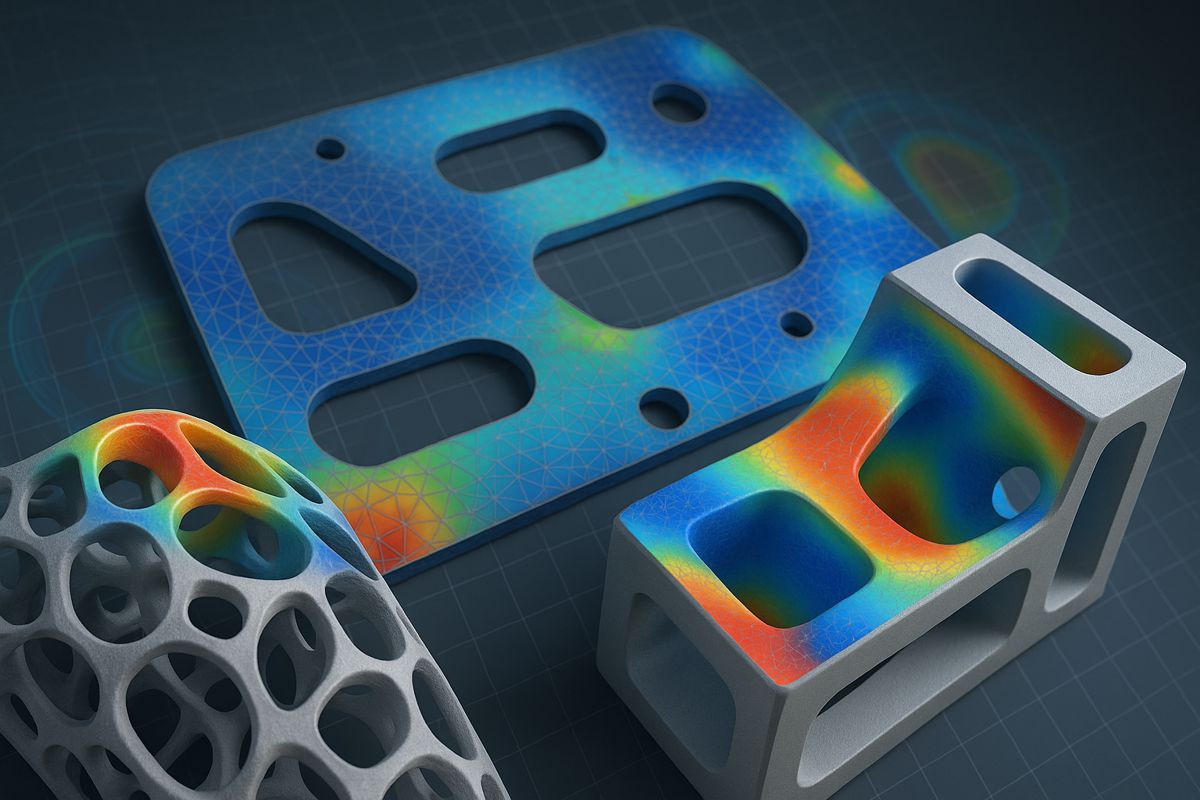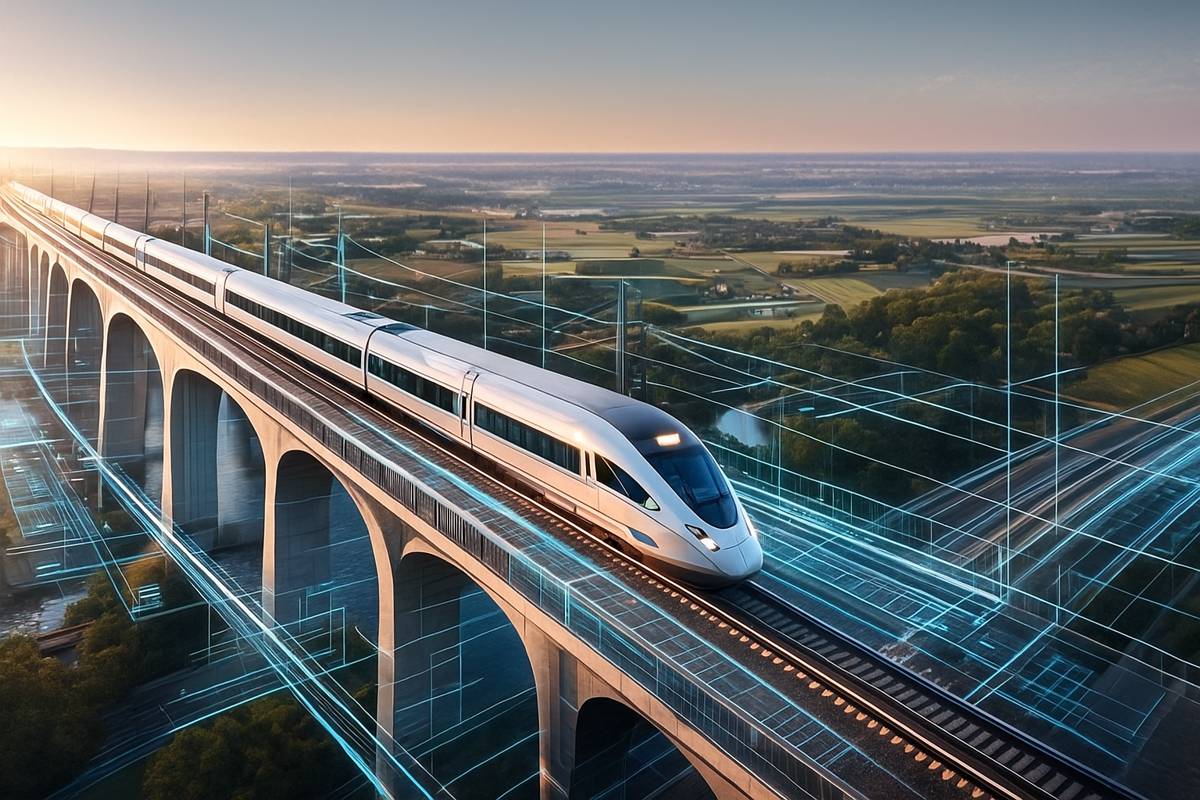deepSPACE Redefines Engineering Design Exploration
Forget what you know about design software. deepSPACE, a ground-breaking generative AI tool developed by Jordan Smart, an aerospace engineer at the University of Illinois at Urbana-Champaign, transforms the way designers and engineers approach problem-solving.
By harnessing artificial intelligence, deepSPACE takes initial design requirements and quickly generates hundreds to thousands of configurations. This remarkable tool doesn’t just spit out ideas; it produces a full 3D CAD model with performance evaluations, cutting traditional design times exponentially.
“We wanted to do for engineering and design what large AI language models have done for text,” explains Smart. “Instead of starting with a blank screen, deepSPACE users input their requirements, and within minutes, they’re reviewing 100 to 1,000 feasible concepts. It’s like moving from tunnel vision to a panoramic view of the design space.”
The study, “deepSPACE: Generative AI for Configuration Design Space Exploration,” by Emilio Botero and Jordan Smart was published in the AIAA Aviation Forum and ASCEND.
The Flexibility of deepSPACE
deepSPACE’s impressive versatility makes it stand out. While traditionally aimed at physics-driven engineering, the tool is adaptable enough to handle a broad range of challenges, from basic component design to intricate logistical frameworks. Smart and his research partner, Emilio Botero, tested deepSPACE’s adaptability by applying it to beams, wheels, and aircraft—and even entire logistical networks.
This flexibility extends to cost analysis as well. “We trained deepSPACE with a mix of historical and simulation data,” says Smart. “It’s capable of incorporating standard cost estimation tools to provide initial feedback on expenses, giving users a fuller view of design feasibility.”
To ensure deepSPACE meets industry needs, Smart and Botero collaborated with aerospace and automotive giants, ensuring the platform is equipped for both individual researchers and large organisations. These partnerships also allow companies to create custom models linked to proprietary data, making deepSPACE not just a tool, but a teachable platform that can adapt to specific organisational needs.
Efficiency Meets Intelligence
Compared to traditional algorithms, deepSPACE works with a fraction of the data, achieving similar accuracy with only about 250 samples versus the typical 20,000 simulations. This efficiency is pivotal in fields like aerospace, where the high cost of physical testing makes simulations essential.
“Say you’re designing an aircraft and want to explore what happens if you tweak the wings or add an engine,” explains Smart. “deepSPACE takes complex trade-offs and analyses them on fewer data points, allowing for faster and more economical designs. It gives designers more freedom to experiment, without the exhaustive resource drain typical of older methods.”
The rapid generation of high-quality, ready-to-edit CAD files is another perk, offering designers complete compatibility with standard design software. As Smart notes: “deepSPACE produces CAD files just like a human would, meaning any changes or tweaks are available instantly. It slots right into your workflow, almost like you’ve subcontracted the work to another firm and received a complete deliverable.”
Bridging the Human-Machine Gap in Design
One of deepSPACE’s most fascinating features is its capability to ‘think’ beyond conventional logic, occasionally proposing designs that initially seem offbeat but, upon closer examination, prove functional. Smart recounts an instance where deepSPACE generated an aircraft with short wings and offset control surfaces—an unconventional configuration that had, surprisingly, been tested by a major aircraft manufacturer.
The AI’s ability to generate unexpected yet feasible solutions highlights its role as an exploratory partner rather than a mere tool. Smart comments: “deepSPACE’s process is like brainstorming on autopilot. It tries out variations, learns from the outcomes, and adapts. Sometimes it stumbles upon solutions we hadn’t even considered, and that’s exactly the kind of innovation we’re looking for.”
A Playground for Engineers – and Beyond
While deepSPACE is undeniably valuable for industry experts, Smart envisions a future where it reaches younger audiences. “Imagine middle schoolers using deepSPACE,” he muses: “They don’t need to know all the physics or CAD drawing skills. If they’ve got an idea—a car, a spaceship, you name it—they can input it, see what the software suggests, and then adjust it. It’s about opening up the creative possibilities to a new generation.”
This vision isn’t far-fetched. With the deep-learning capability embedded in deepSPACE, even novice users can interact with the software to generate, explore, and learn. By opening doors to younger audiences, Smart aims to cultivate the next generation of engineers and designers who think creatively about solving complex challenges.
Real-World Impact and Future Applications
The practical applications of deepSPACE extend far beyond academia. The tool has the potential to revolutionise the aerospace industry, particularly in prototyping, where the high costs of trial and error often impede innovation.
But the tool’s adaptability opens doors in numerous other fields, from automotive to infrastructure.
Key benefits of deepSPACE include:
- Speed: Generate thousands of concepts in minutes, reducing the time-to-market for new designs.
- Cost-Effectiveness: Achieve results with fewer simulations, decreasing the overall project expense.
- Interoperability: CAD models produced by deepSPACE integrate seamlessly with existing software, preserving all layers for easy editing.
- Customisability: Tailor the platform to meet specific company needs, leveraging proprietary data for unique outcomes.
The program has even drawn attention from government agencies, piqued by the potential to streamline design processes across various sectors.
Towards a Smarter, Faster Design Future
For years, engineering relied heavily on human-led simulations—a bottleneck that slowed innovation. deepSPACE marks a leap forward, enabling engineers to explore design spaces with an AI partner. “It’s like having an engineer in your pocket,” Smart states. “Set up the parameters, go get a coffee, and return to see a range of solutions ready to go.”
deepSPACE represents a new era in design, one that enables rapid prototyping, encourages creative exploration, and potentially disrupts design across industries. Smart’s hope is clear: to inspire creativity in even the most data-heavy fields, fostering a more open, collaborative design culture.
As Smart and Botero continue to push the boundaries of deepSPACE’s capabilities, the industry watches with anticipation. With its powerful blend of speed, adaptability, and intelligence, deepSPACE is more than just software—it’s a co-pilot for innovation, ushering in a future where engineers have the tools to design with precision, agility, and a touch of creative flair.




















